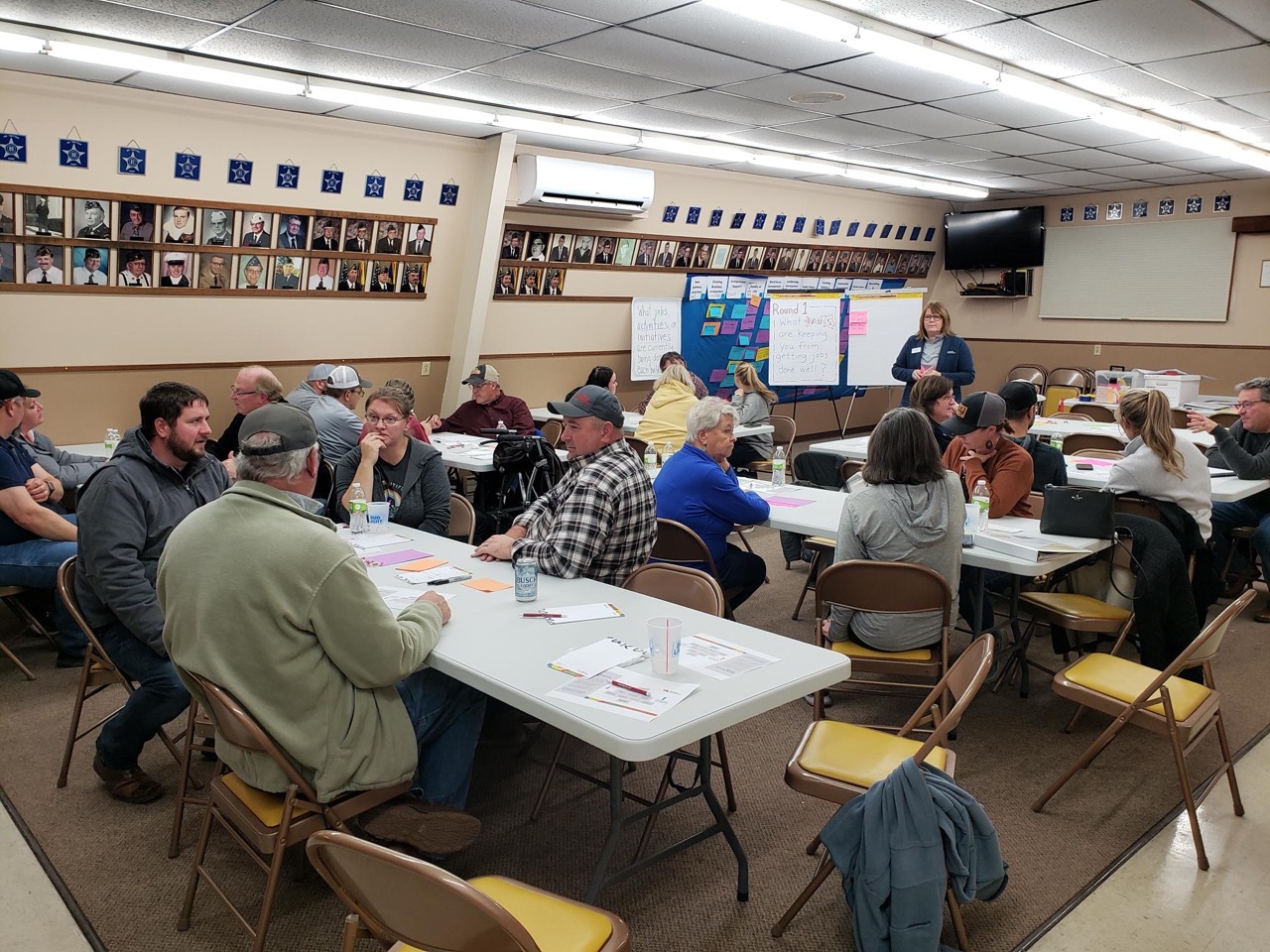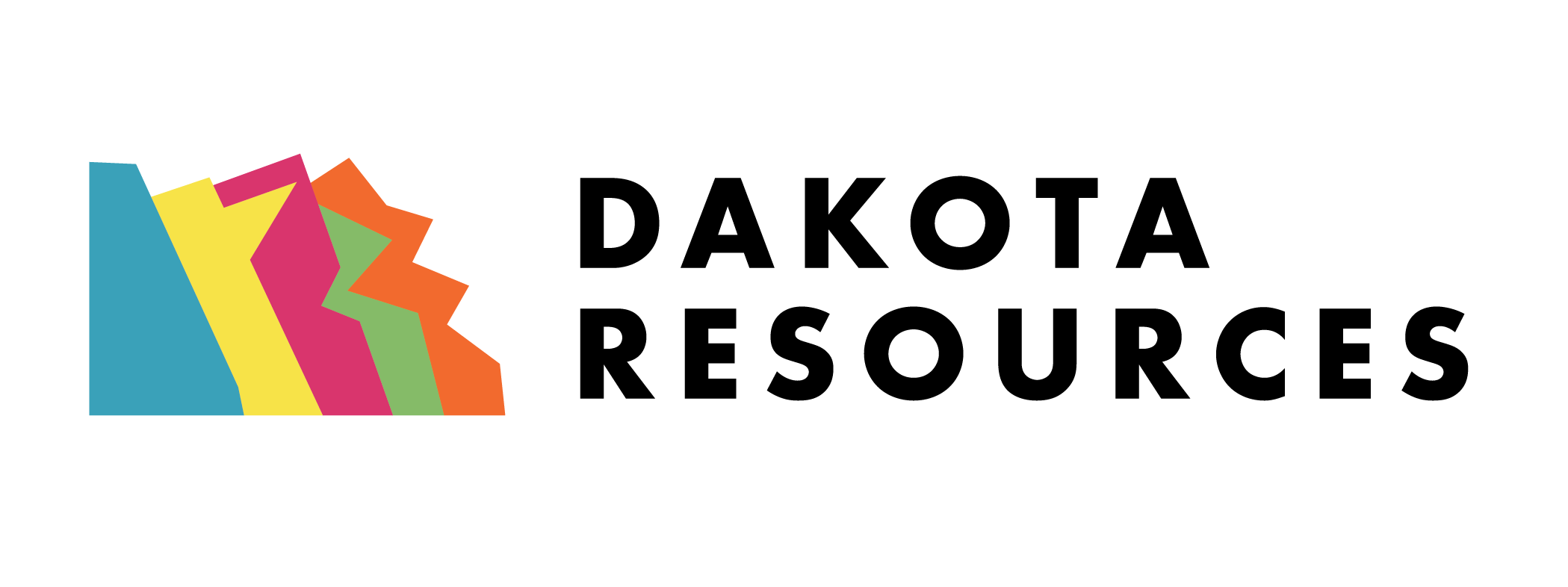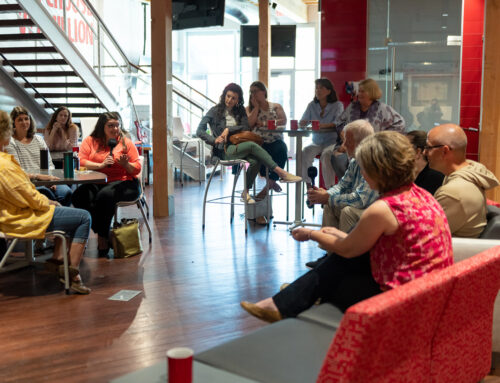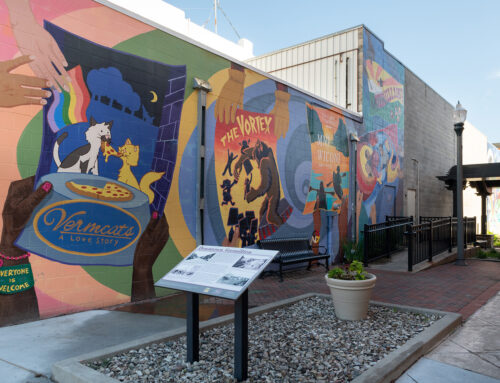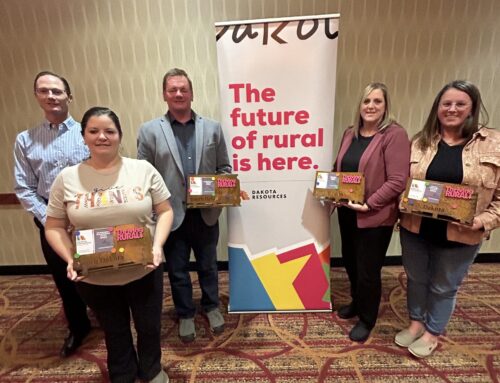Growing B.O.L.D.ly Ahead: Initial B.O.L.D. Cohort Wraps Up
Thanks to a $200,000 Beyond Idea Grant (BIG) from the South Dakota Community Foundation – awarded to Dakota Resources in partnership with the Bush Foundation – we’ve been able to support innovative, community-based, problem-solving efforts for economic development organizations through the B.O.L.D. (Building Organizations for Local Development) Framework.
B.O.L.D’s first cohort, which began last fall and recently wrapped up, supported the following organizations: Colton Development Corporation, Custer Area Development Corporation, Estelline Area Economic Development Corporation, Garretson Economic Development, Southeast Enterprise Facilitation Project, and Vermillion Area Chamber and Development Company.
With six organizations served and more to come in 2024, we’re excited to share the initial outcomes of this program.
“What’s become clear to us and to the organizations we’ve served so far through this program is that organizational capacity increases when economic development organization boards focus on growing their capacity as a board,” said Paula Jensen, Senior Vice President and Community Coach at Dakota Resources.
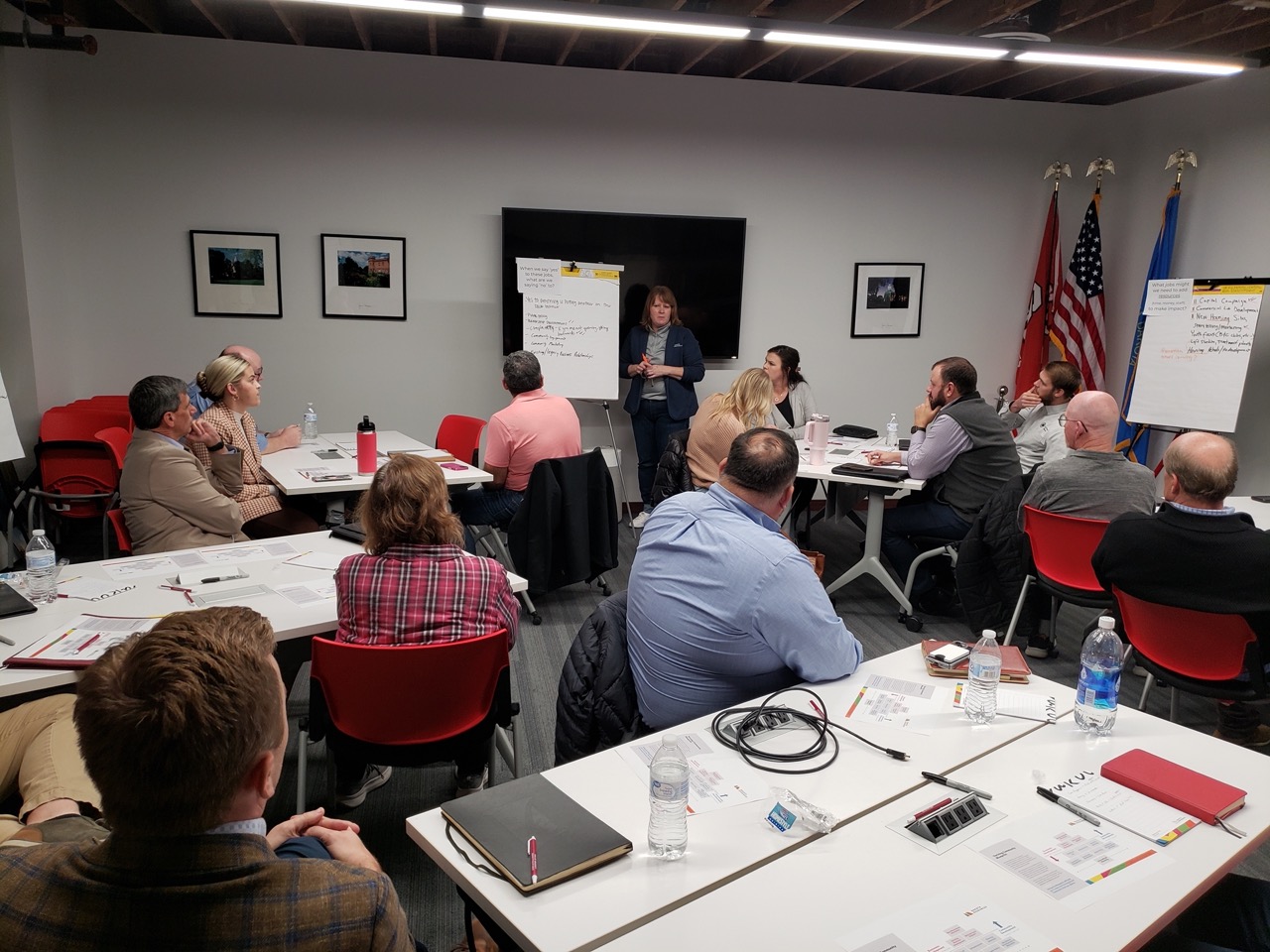
All B.O.L.D. participants hosted a Community Stakeholder Gathering where community members are able to provide input into the process. Pictured above is Vermillion Area Chamber & Development Company.
The B.O.L.D. Framework
In the first of B.O.L.D.’s three phases, Dakota Resources staff begins work at the board and organizational level to establish what’s presently happening in each rural organization. This important discovery work is designed to capture an accurate snapshot of the present-day status of the work being done in the organization.
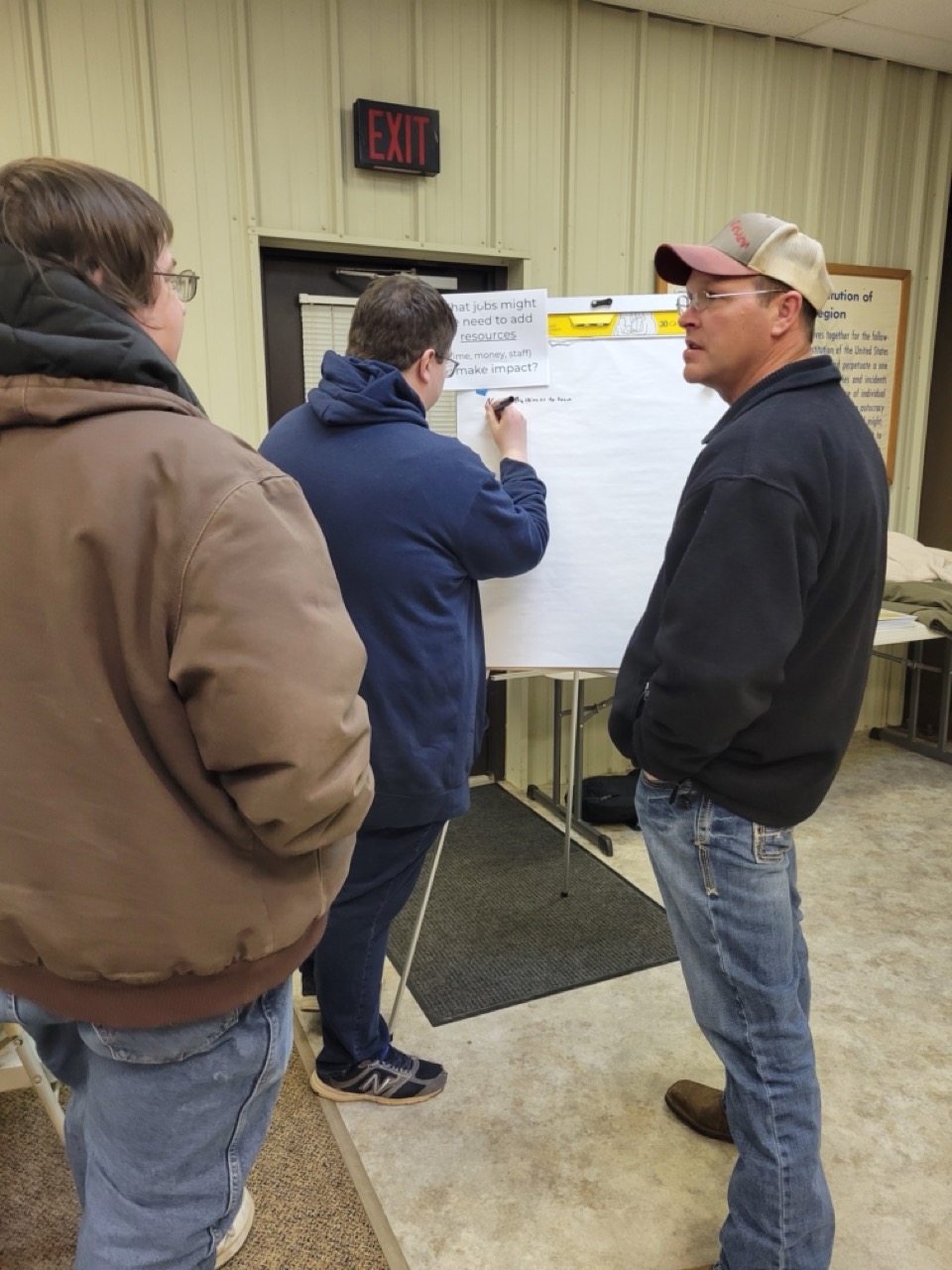
All B.O.L.D. participants hosted a Community Stakeholder Gathering where community members are able to provide input into the process. Pictured above is Colton Development Corporation.
In particular, Dakota Resources implements self-assessments, which help an organization understand how they rate their own performance as a non-profit in areas of organizational management and board management and community profiles, which gathers Census and other publicly available data into a snapshot for their specific service area.
While each organization had distinctive goals and objectives in mind, which resulted in unique experiences for each participating organization, all six definitely had common challenges, said Dakota Resources’ Nick Fosheim, Client Relationship Director and Community Coach.
“Regardless of size, staffing, or longevity, all six participating organizations were feeling challenged by a common set of factors that we identified early in the process through these self-assessments,” Fosheim said. “All six encountered challenges related to board roles and responsibilities, their funding model, and communications and marketing, among other issues.”
The second phase of B.O.L.D. expands the scope of the outreach to the community level by engaging a focused group of stakeholders who will participate in mapping the Thriving Community Blueprint. In this phase, Dakota Resources relies upon the Thriving Community Blueprint to distinguish which building blocks are present in a given community and which entity/ies are taking ownership of these core foundations to foster community and economic development.
The Blueprint makes it possible for community stakeholders to engage in a collaborative discussion about the expectations and the opportunities for public and private contributors to each do their part to support community growth.
Finally, the third phase of the B.O.L.D. framework brings the work back to the board level and digs more deeply into the mission-related moves that are needed for continued momentum and progress. This phase will vary based on the needs of each organization, but this phase allows leaders to work together on the organization, as opposed to only working in the organization. While the third phase marks the conclusion of the B.O.L.D. Framework, an optional fourth phase further activates economic development leaders to further engage in strategic planning and/or capacity building activities.

All B.O.L.D. participants hosted a Community Stakeholder Gathering where community members are able to provide input into the process. Pictured above is Southeast Enterprise Facilitation Project.
Garretson’s Story: Initial Outcomes
As a newly formed organization, Garretson Economic Development (GED) engaged in B.O.L.D. out of a desire to properly set up the organization for success, not only structurally but also with short-term and long-term strategic goals in place.
And according to Chad Hanisch of GED, the program was an ideal fit to help the volunteer board members prioritize long-term strategic planning and minimize the day-to-day “fires” that any organization encounters.
“B.O.L.D. was a perfect fit for us to address the proper structural organizational needs and goal setting,” Hanisch said. “While everyone from the board and the community want to see instant results, the reality is that in order to ensure long-term success, it all takes time.”
Part of building an economic development organization from the ground up involves defining what success looks like for a given community. Through a Lunch & Learn session as part of B.O.L.D., Hanisch and other participants were challenged to reconsider the “normal” metrics of success, most of which are based on growth, be it of the community, the school district, businesses in town, and more.
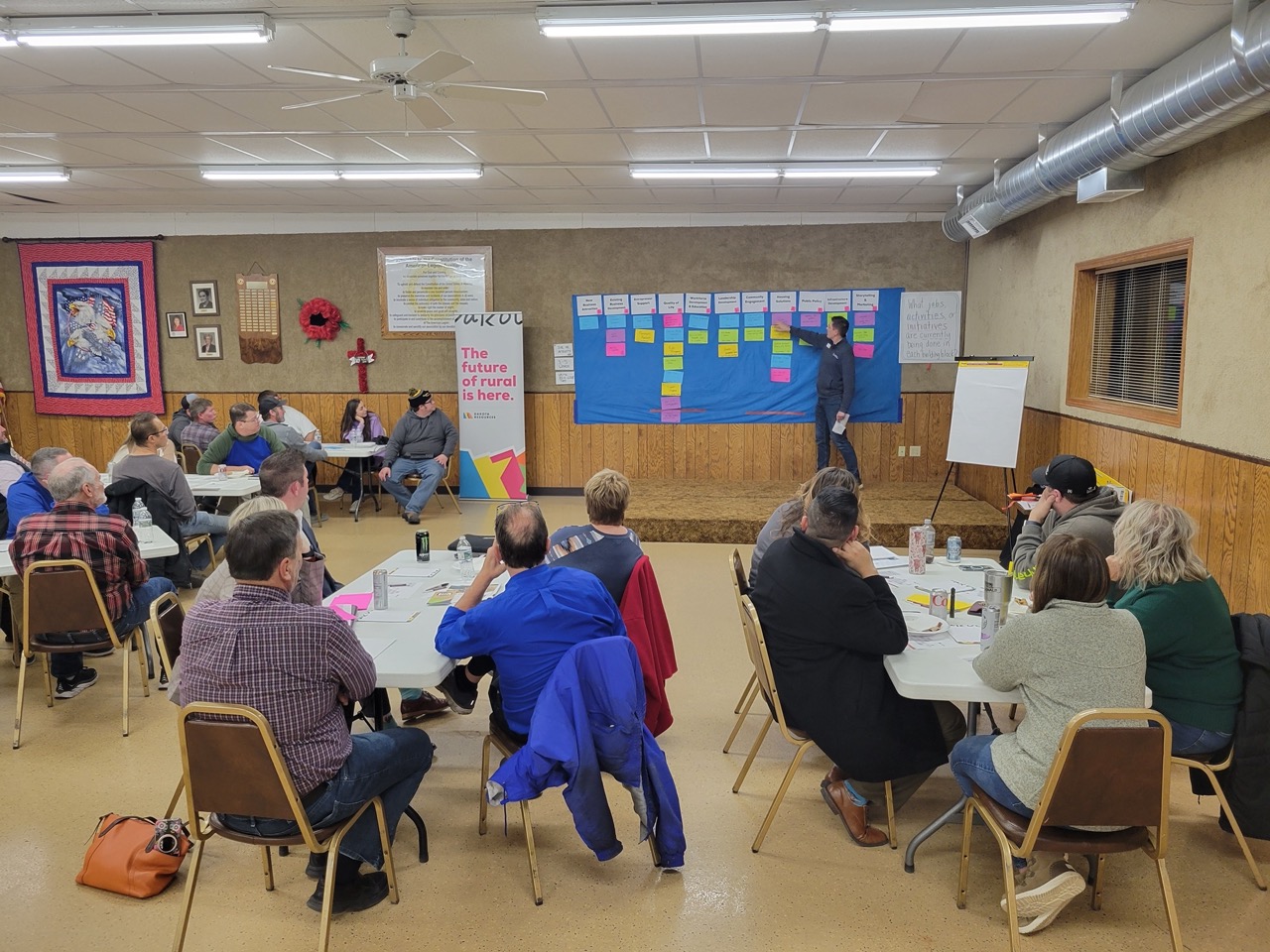
All B.O.L.D. participants hosted a Community Stakeholder Gathering where community members are able to provide input into the process. Pictured above is Garretson Development Corporation.
For Garretson, these growth metrics are certainly worth identifying and tracking, but he came away from that Lunch & Learn experience with new metrics to consider, too.
“Success doesn’t have to be solely focused on the growth metrics,” Hanisch said. “My absolute, number one takeaway is that there are many positive things that Garretson has going on that far outweigh the stereotypical metrics. Focusing on and celebrating the positive elements of a community is what really defines community success, and stopping to see these things and celebrate them builds community pride.”
Overall, GED’s experience inside B.O.L.D. motivated the organization to move forward collectively and collaboratively, rather than feeling like they were spinning their wheels or winging it all the time.
“If you’re at a loss of how to accomplish your goals, or you’d like to learn how to initiate productive conversations and meetings and have tough conversations, B.O.L.D. is all of that and then some,” Hanisch said. “What makes Dakota Resources, B.O.L.D., and the overall Thriverr community so exceptional is that it’s full of like-minded individuals who have been there, in your economic development shoes.”
Custer’s Story: Initial Outcomes
In comparison to Garretson Economic Development (GED), which is a newer organization, the Custer Area Economic Development Corporation was established in 2010. This longevity brought unique challenges as well.
While all board members are established in the Custer community as business owners, entrepreneurs, or members of local governments and organizations, all members serving the board do so on a volunteer basis. The B.O.L.D. program offered the opportunity for these members to develop their skills together as a board, said Custer board member Dr. Kari Bolen.

All B.O.L.D. participants hosted a Community Stakeholder Gathering where community members are able to provide input into the process. Pictured above is Custer Area Development Corporation.
“Utilizing the BOLD sessions guided by Nick and Paula gave our board members a chance to take a deep dive into our organization, our structure, and our future goals and initiatives,” Bolen said. “Through B.O.L.D, we were able to have planning sessions and working sessions as a board, as well as a community session with key stakeholders in our community. As a result, we created an action plan on our findings that we are currently using as a board to address the priority needs of our organization.”
One such priority is related to communication. According to Bolen, the board’s communication initiative includes organizing membership data, creating newsletters, updating their website, choosing new electronic communication methods, and creating an annual report to better communicate their mission with members and the community.
In addition to crucial challenges like housing and childcare, Bolen says, they are also actively working on planning a leadership development course and determining when to offer more business basics courses in the Custer community.
Overall, Bolen shared that as a result of their experience in B.O.L.D., board members who are serving Custer collectively have a great template moving forward to achieve future goals, initiatives, and growth.
“The B.O.L.D. program was a very organized way for our board to break down our organization and the structure we already have in place, analyze the positives and negatives within our organizational framework, and create lasting goals for future development,” Bolen said. “The program brought us closer together as board members as well through the brainstorming activities that we completed together and from working together to organize the community stakeholder event.”
Growing B.O.L.D.ly Ahead
While the sessions offered through B.O.L.D. have come to a close for these six organizations, Dakota Resources staff has made it clear to this cohort that their work is not yet complete.
“We’ve shared with all six of these organizations that it might take several more months (or longer) before they’ll see the results of this intensive work through B.O.L.D.,” Fosheim said. “There’s not a box you can check that this work has been completed – instead, there’s a constant rhythm to working on themselves as boards and as organizations, and it’s work that they must be committed to doing long-term.”
Dakota Resources is still accepting applications for B.O.L.D. Cohort 3, which will occur later this year. Fill out an interest form here.
